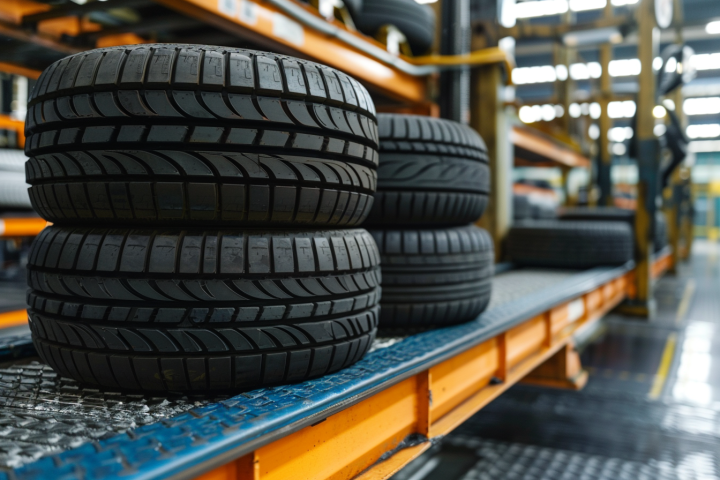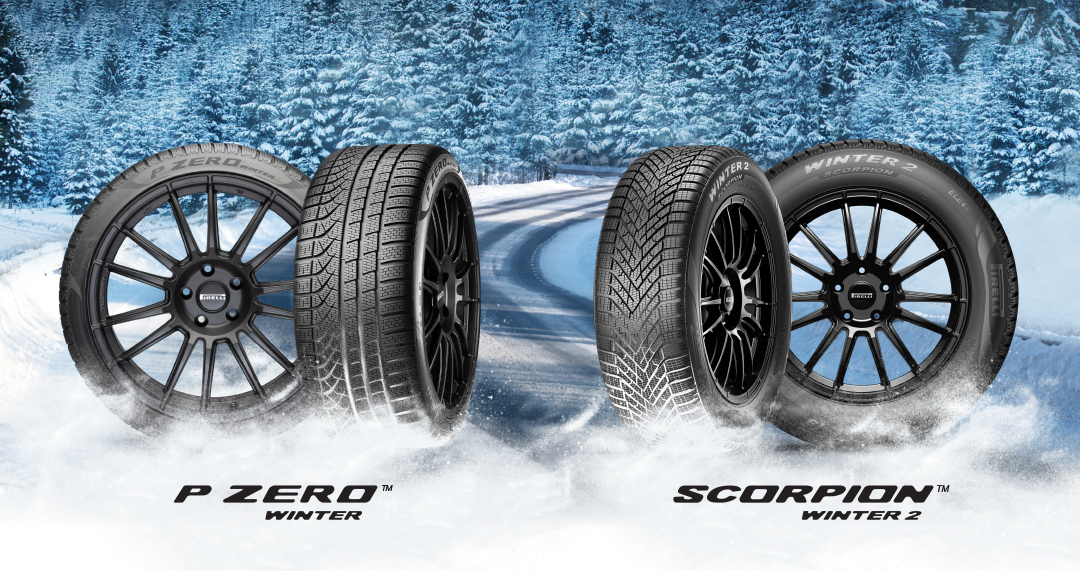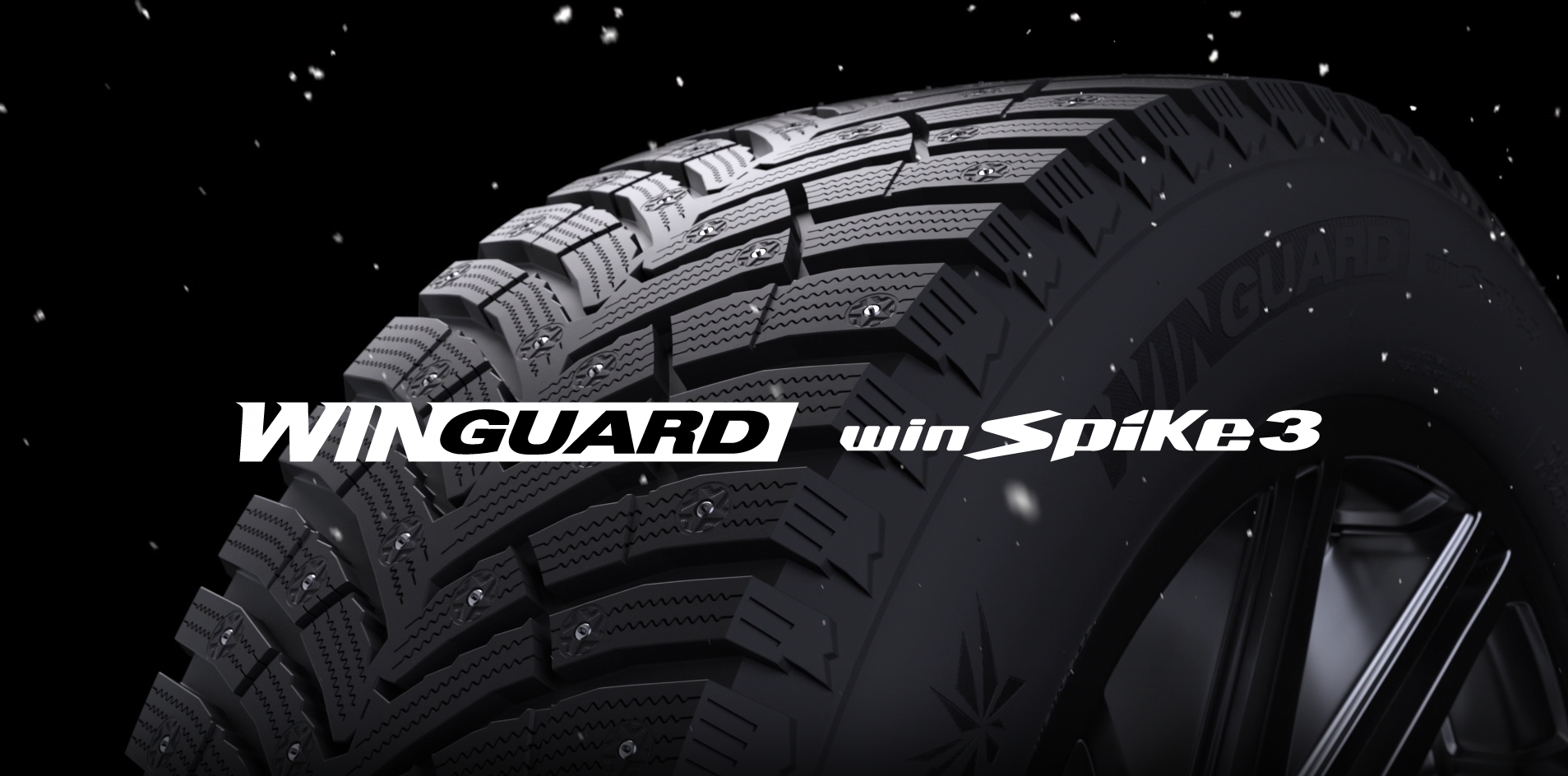Last Updated on August 2, 2024
Maximizing Your Investment: Smart Tips for Tires and Wheels Purchases
Choosing new wheels and tires is crucial for any car owner. Not only are these parts essential to the car’s functionality and safety, but they also come at a substantial cost. This guide offers in-depth explanations of the significance of tires and wheels and the goals for making wise financial decisions about purchasing these essential car components.
Overview of Tire and Wheel Importance
Tires and wheels are essential for the operation and safety of any vehicle. They are crucial in defining the vehicle’s handling, braking, overall performance, and carrying the weight.
- Handling and Safety: The right tires and wheels can significantly improve a vehicle’s handling. Good quality tires improve grip, lowering the chance of skidding in wet situations and increasing road safety.
- Fuel Efficiency: Tires have a considerable impact on fuel consumption. Low rolling resistance tires, for example, can minimize the energy required to move the vehicle, resulting in increased fuel efficiency.
- Comfort and Noise Reduction: The design and substance of T tires affect the ride’s smoothness and the amount of road noise transferred into the cabin.
- Aesthetic Appeal: Wheels enhance a vehicle’s aesthetic appeal. They come in various forms and coatings, allowing owners to personalize the appearance of their cars.
Objectives of the Guide
This guide aims to assist you in navigating the complexities of purchasing new tires and wheels with a focus on financial considerations. The objectives of this guide include:
- Educating on Types and Features: Explain the numerous types of tires and wheels, their features, and how they meet different driving needs.
- Financial Planning: Consider the costs of buying tires and wheels, including upfront fees, long-term financial ramifications, and budgeting measures.
- Analyzing Cost-benefit: Understand the cost-quality tradeoff, primarily how investing in higher-quality tires can result in long-term savings.
- Navigating Discounts and Deals: Share tips on finding the best deals, understanding seasonal trends in pricing, and negotiating for the best prices.
- Understanding Warranties and Insurance: Explain the importance of warranties and insurance for tires and wheels and how they can impact the overall cost and value.
Understanding Tire and Wheel Basics
Tires and wheels are essential for any vehicle; they are necessary for safety, efficiency, and overall performance. Understanding their basics is crucial for making informed purchase, maintenance, and replacement decisions.

Types of Tires and Wheels
There are various types of tires and wheels, including all-season, performance, off-road tires, and steel and alloy wheels, each designed to cater to different driving conditions, vehicle types, and performance requirements.
- All-Season Tires: These tires are intended to operate well under various conditions, including wet roads and light winter driving. They are a popular choice for their adaptability.
- Summer Tires: Designed for warm weather, these tires have a good grip and handle on dry and wet roads but are unsuitable for winter use.
- Winter Tires, often known as snow tires, provide improved traction in snowy and icy weather. Their tire patterns and rubber compositions are specifically designed for cold conditions.
- Performance Tires: Performance tires are specifically built for sports automobiles and performance vehicles, providing high grip levels for improved handling at incredible speeds.
- Off-Road Tires: These tires are designed for rugged terrain and include reinforced sidewalls and aggressive tread patterns, making them perfect for off-roading and challenging terrains.
In terms of wheels, there are various materials and designs, including:
- Steel Wheels: Steel wheels are known for their durability and strength and are ideal for winter use.
- Alloy Wheels: These wheels are made from an alloy of aluminum or magnesium, which makes them and improves the bicycle’s acceleration and braking.
- Forged Wheels: These are strong yet lightweight, made by developing a single piece of metal under extreme pressure.
Lifespan and Durability Considerations
Several factors influence the lifespan of tires and wheels:
- Aggressive driving might cause tires to wear out more quickly.
- Rough or uneven roads can result in faster wear and tear.
- Regular rotation, alignment, and pressure checks can help extend the life of your tires.
- High-quality tires may have a longer lifespan.
Tires can last 25,000 to 50,000 miles, depending on the conditions. Wheels, if properly maintained, can last the vehicle’s life; however, they can be damaged by collisions such as potholes or curbs.
Impact on Vehicle Performance
Tires and wheels significantly impact vehicle performance:
- Handling and Stability: The type and condition of tires affect how well a vehicle responds to steering, especially in adverse conditions.
- Braking Performance: Good tires can reduce braking distances, particularly in wet or slippery conditions.
- Fuel Efficiency: Tires with lower rolling resistance can improve fuel economy.
- Ride Comfort: The correct tire and wheel combination can lead to a smoother, more comfortable ride.
Cost Analysis: Tires and Wheels
When purchasing new tires and wheels for a vehicle, understanding the cost implications is essential for making an informed decision. This section delves into the initial purchase costs, comparing standard versus high-performance tires and understanding the pricing of wheels.
Initial Purchase Costs
The initial cost of getting new tires and wheels might vary dramatically depending on various factors.
The cost of tires varies depending on whether you buy all-season, summer, winter, or performance tires.
- Type of Tires: Size and specs: Larger tires or those with specialized performance specs may cost more.
- Brand and Quality: Premium brands frequently fetch higher prices due to their reputation for quality and longevity.
- Wheel Material and Design: Alloy wheels are often more expensive than steel wheels, and unique designs or finishes may increase the cost.
Price Comparison: Standard vs. High-Performance Tires
Standard tires are often less expensive and focus on durability and all-weather performance. On the other hand, high-performance tires cost more because of their innovative materials and design, which provide improved handling, speed, and road grip.
- Standard Tires: These are designed for general use and balance durability, performance, and cost-efficiency. Prices for common tires can range widely but are generally more affordable, making them a popular choice for average daily driving needs.
- High-Performance Tires: These tires are designed for superior handling, speed, and agility. They are often made from a softer rubber compound, providing better grip but potentially leading to faster wear. Due to their specialized design and materials, high-performance tires are usually more expensive than standard ones. This type of tire is typically preferred by sports car enthusiasts or drivers who prioritize performance.
Understanding Wheel Pricing
Wheel pricing is influenced by factors such as material, size, brand, and design:
- Material: Steel wheels are often the most economical alternative, whereas alloy wheels are more expensive due to their lighter weight and aesthetic appeal.
- Size: Larger wheels are frequently more expensive. The cost rises due to the additional material, strength, and engineering required to maintain performance standards.
- Brand and Design: Premium or custom designs can considerably raise the cost. Exceptional finishes, like chrome or unusual patterns, also increase the price.
When analyzing the cost of tires and wheels, it is crucial to consider both the initial purchase price and the long-term value. Standard tires and steel wheels typically offer the best cost-efficiency for everyday use. In contrast, high-performance tires and alloy or custom wheels are more expensive but may provide specific performance, aesthetics, or handling benefits.
Long-Term Financial Implications of Tires and Wheels
When purchasing new tires and wheels, it is critical to think about the long-term financial ramifications in addition to the original purchase price. These include fuel efficiency, continual maintenance, and tire and wheel longevity.
Fuel Efficiency Considerations
Tires play a significant role in a vehicle’s fuel efficiency:
- Rolling Resistance: Tires with low rolling resistance require less energy to move, potentially increasing fuel efficiency. While these tires may be more expensive initially, they can result in long-term cost benefits due to lower fuel usage.
- Tire Pressure: Properly inflated tires reduce fuel consumption. Monitoring and maintaining tire pressure is an easy yet efficient technique to improve fuel efficiency.
- Tire Type and Tread: Certain tire types, particularly those intended for high-performance or off-road use, might increase fuel consumption due to higher resistance or weight.
Maintenance and Longevity
The longevity of tires and wheels and their maintenance needs also contribute to their long-term cost:
- Tire Lifespan: The durability of tires is determined by their quality, type, and usage. High-performance tires may provide superior handling, but they wear out more quickly than standard tires, necessitating more frequent replacements.
- Maintenance Costs: Tire rotations, balancing, and alignments can all help increase tire life. While this incurs some cost, it is typically less expensive than premature tire replacement.
- Wheel Durability: Wheels made of solid materials, such as particular alloys, can resist more wear and tear and potentially last longer than cheaper alternatives. However, they may require extra upkeep to stay in good shape, particularly if they have unique finishes.
Budgeting for Tires and Wheels
Purchasing new tires and wheels is essential to car maintenance but can be a big financial commitment. Proper budgeting is required to ensure this expense is not a financial burden. This article discusses creating a realistic budget, identifying hidden expenditures, and conducting a cost-benefit analysis of premium choices.

Setting a Realistic Budget
Setting a realistic budget for tire purchases entails considering the cost of viable options for your vehicle and driving needs as well as the long-term worth of tire longevity and performance.
- Assess Your Needs: Choose the tires and wheels appropriate for your driving circumstances and vehicle type. Tire prices vary depending on the kind (all-season, performance, or off-road).
- Research Market Prices: Understand the typical price of the required tires and wheels. Prices vary according to size, brand, and tire type.
- Include Installation Costs: The budget should include the cost of tire mounting, balancing, and alignment, which can significantly increase the total price.
- Plan for Replacement and Maintenance: Consider the tire and wheel lifespans and make plans to replace them eventually. Regular maintenance charges, like tire rotations, should also be included.
Hidden Costs to Consider
When purchasing tires, you should be aware of hidden costs such as installation fees, tire disposal charges, and potential future maintenance, like rotations and alignments, which can impact the overall price.
- Disposal Fees for Old Tires: Many locations demand a fee to dispose of old tires.
- Unexpected Repairs: Potholes or road debris can damage tires and wheels, resulting in unforeseen costs.
- Seasonal Tire Changes: If you live in a region with severe winter conditions, you might need a separate set of winter tires, increasing your overall expense.
- Insurance Premiums: Some premium tires and custom wheels might affect your vehicle’s insurance premiums.
Cost-Benefit Analysis of Premium Options
To establish their overall value, a cost-benefit analysis of premium tire options should weigh the more significant initial expenditure against benefits such as improved fuel efficiency, increased safety, improved performance, and possibly longer tire life.
- Longevity: Premium tires often have a longer lifespan, which could make them more cost-effective in the long run despite the higher initial price.
- Performance and Safety: High-quality tires can offer better handling, braking, and safety features. This is crucial for drivers in challenging driving conditions.
- Fuel Efficiency: Some premium tires are designed to improve fuel efficiency, which can save money on gas over time.
- Resale Value: Vehicles fitted with high-quality tires and wheels might have a higher resale value.
- Comfort and Noise Reduction: Premium tires can offer a more comfortable ride with less noise, which might be a priority for some drivers.
Financing and Payment Options for Tires and Wheels
Buying new tires and wheels may be a substantial investment, so understanding the various financing and payment alternatives is critical for making an informed selection. This article discusses the advantages and disadvantages of cash purchases vs funding, various credit choices and interest rates, and the availability of layaway and payment plans.
Cash Purchase vs. Financing
The decision between cash purchase and financing for tires is based on immediate affordability vs. the requirement for flexibility; cash purchases do not incur interest, but funding can spread the cost over time but may contain additional interest or fees.
- Cash Purchase: Paying for tires and wheels in cash is simple and eliminates interest and debt. However, it requires having the total amount beforehand, which can be considerable.
- Financing: Many tire and wheel retailers provide financing options. This can be a simple way to spread out the cost over time, but it usually comes with interest charges, which raise the entire cost.
Credit Options and Interest Rates
Credit choices for tire purchases frequently come with varying interest rates and terms; analyzing these rates and knowing the overall cost over time ensures that the credit choice is appropriate for your financial circumstances.
- Credit Cards: Purchasing with a credit card is a standard option. Some cards offer rewards or cashback on purchases, but high interest rates can significantly increase costs if the balance is not paid in full.
- Store Credit: Some tire and wheel retailers offer credit cards or lines of credit. These may come with special financing offers, such as deferred interest if paid within a certain period. However, high interest rates may apply if the balance is unpaid within the promotional period.
- Personal Loans: A personal loan can be another option for those who don’t want to use credit cards. Interest rates usually depend on credit history and can vary widely.
Layaway and Payment Plans
Layaway and payment plans offer alternatives to immediate full payment. They allow buyers to reserve tires and pay in installments over time, usually without interest, making them a budget-friendly option for managing more significant expenses.
- Layaway Plans: Some retailers offer layaway plans, allowing customers to pay for their tires and wheels over time and receive the product once it’s fully paid for. This option can be interest-free, making it a budget-friendly choice.
- Payment Plans: Similar to layaway, payment plans allow staggered payments over time. Unlike layaway, consumers frequently receive their tires and wheels immediately, albeit they may incur interest or service fees.
Discounts and Deals on Tires and Wheels
Finding the best deals on tires and wheels can significantly reduce the financial burden of this necessary purchase. This article explores various savings opportunities, including seasonal sales and promotions, loyalty programs, and tips for negotiating better deals.
Seasonal Sales and Promotions
Taking advantage of seasonal sales and promotions can lead to significant savings on tire purchases, as many retailers offer discounts during specific times of the year, like holiday sales or end-of-season clearances.
- Retailers frequently offer discounts at the end of a season to clear inventory. For example, winter tires may be discounted in early spring, while summer tires may be ignored in early fall.
- Major holidays such as Black Friday, Cyber Monday, and Memorial Day are known for massive sales and can be great opportunities to get savings.
- Older models may be discounted when a new tire model is introduced.
Loyalty Programs and Discounts
Joining loyalty programs offered by tire retailers or manufacturers can provide access to exclusive discounts, rewards, and special offers, helping to reduce the overall cost of tire purchases over time.
- Membership Discounts: Some tire and wheel retailers offer discounts to specific organizations or club members. Check to see if any memberships you hold offer such benefits.
- Loyalty Programs: Retailers or manufacturers may offer loyalty programs that offer discounts, rebates, or exclusive deals to frequent customers.
- Bundled Deals: Purchasing tires and wheels as a package or bundling them with other services like alignment can sometimes lead to discounts.
Insurance and Warranties for Tires and Wheels
Purchasing tires and wheels is a substantial investment in your vehicle’s safety and performance. Protecting this investment with insurance and warranties is crucial. This article discusses tire and wheel warranties, insurance coverage alternatives, and the cost or value of extended warranties.
Understanding Tire and Wheel Warranties
Understanding tire and wheel warranties is crucial as they can vary widely, typically covering manufacturing defects and sometimes including tread life guarantees, which can offer significant savings in case of premature wear or failure.
- Manufacturer’s Warranty: Most new tires come with a manufacturer’s warranty, which typically covers defects in materials and quality for a specified period or mileage. This does not cover normal wear and tear or damage from accidents.
- Tread Life Warranty: Some tires come with a tread life warranty that guarantees a certain number of miles before they wear out. If the tires wear out prematurely, you may receive a prorated refund or discount on a new set.
- Road Hazard Warranty: This type of warranty is sometimes included or offered as an add-on. It covers tire damage caused by road hazards like potholes or nails. Coverage varies, so it’s essential to understand the specifics.
Insurance Coverage for Tires and Wheels
Insurance coverage for tires and wheels, sometimes available as an add-on to auto insurance policies, can protect against damage from road hazards, theft, or accidents, offering financial relief in unforeseen situations.
- Auto Insurance Policies: Standard auto insurance policies often do not cover tire damage unless it is part of a more significant accident claim. Some policies offer additional coverage for tires and wheels.
- Separate Tire Insurance: Some companies offer specific tire and wheel insurance policies, which can cover the cost of repair or replacement due to road hazards.
- Leased Vehicles: If you rent a vehicle, check the lease agreement, as it may require you to maintain tire insurance or similar coverage.
Cost and Value of Extended Warranties
Evaluating the cost and usefulness of extended warranties for tires and wheels entails determining the likelihood of damage, the coverage terms, and the possible cost savings in the event of tire replacement or repair.
- Extended Warranty Costs: An extended warranty for tires and wheels varies according to the coverage level, tire type, and vehicle model. It’s critical to weigh the costs versus the potential advantages.
- Assessing Value: Consider aspects such as the sort of roads you usually travel on, car type, and driving habits. You might consider purchasing an extended warranty if you frequently drive in places with poor road conditions.
- Limitations and Exclusions: Understand what is and is not covered. Some warranties may have specified limitations or require regular maintenance to be valid.
- Peace of Mind against Cost: Your risk tolerance and desired peace of mind determine whether an extended warranty is worthwhile.
Environmental and Economic Considerations for Tires and Wheels
The environmental and economic implications of vehicle components such as tires and wheels are receiving more attention in the modern world. This article investigates eco-friendly tire options and the financial impact of choosing between locally produced and imported tires.
Eco-Friendly Tire Options
Eco-friendly tire alternatives include those constructed from sustainable materials. They have lower rolling resistance for better fuel efficiency and longer life, reducing environmental effects through less waste and resource use.
- Low Rolling Resistance Tires: These tires are designed to reduce energy loss as they roll, decreasing the required rolling effort and, in the process, improving the vehicle’s fuel efficiency. This efficiency can lead to significant reductions in CO2 emissions.
- Recycled and Sustainable Materials: Some manufacturers are exploring using sustainable materials in tire production, such as recycled rubber from old tires, bio-based materials, and even rubber alternatives like dandelion rubber.
- Longevity: Eco-friendly tires are often designed to last longer, reducing the frequency of tire replacement and, as a result, the environmental impact associated with tire production and disposal.
- Innovations in Tire Technology: Tire technology advancements strive to improve fuel efficiency while maintaining tire safety and tread life. Tire tread designs and rubber compounds are examples of technological advancements.
Economic Impact of Local vs. Imported Tires
Choosing between local and imported tires can have varied economic consequences; local tires benefit domestic companies and minimize shipping costs and emissions, while imported tires provide a more extensive range of options at lower rates.
- Supporting Local Industries: Purchasing tires made by local manufacturers can positively impact local industries and employment. It contributes to the local economy and sometimes means shorter supply chains, which may reduce transportation-related emissions.
- Cost Implications: Due to manufacturing costs, local tires can sometimes be more expensive than imported ones. However, the long-term economic benefits to the local economy can offset these initial costs.
- Imported Tires: While imported tires may be cheaper due to lower production costs in the country of origin, they often have a larger carbon footprint due to long-distance transportation. Additionally, reliance on imported tires can impact local industries and jobs.
- Quality Considerations: The quality of tires, whether local or imported, is crucial. High-quality tires, regardless of origin, can offer better longevity and safety, which are significant economic and environmental considerations.
- Trade Policies and Tariffs: Economic considerations also include the impact of trade policies and tariffs on tire prices. These can significantly affect the cost of imported tires, influencing consumer choice and market dynamics.

Making an Informed Decision
Choosing the correct tires and wheels for your car entails more than simply following market trends or choosing primarily on pricing. Before making a purchase, it is necessary to thoroughly evaluate personal demands, analyze current market trends, seek professional guidance, and create a checklist. This article explains the critical stages that help you make an informed decision.
Assessing Personal Needs vs. Market Trends
When buying tires, one must consider personal demands such as driving patterns, vehicle type, and local road conditions rather than just following market trends. This ensures that the tires chosen are appropriate for individual needs and safety.
- Understanding Your Driving Conditions: Consider the typical driving conditions you encounter. You might need winter tires if you live in an area with harsh winters. For those in warmer climates, all-season tires could be more appropriate.
- Vehicle Type and Usage: The type of vehicle you have and its intended use also dictates the kind of tires and wheels needed. A sports car may benefit more from high-performance tires than a family sedan.
- Market Trends: While it is essential to be aware of the latest advancements and popular choices in the market, these trends should be within your specific needs. For instance, eco-friendly tires are a growing trend but should align with your driving habits and conditions.
- Budget: Evaluate your spending ability. While choosing cheaper options is tempting, consider the long-term costs and benefits of investing in higher-quality tires and wheels.
Importance of Professional Consultations
Seeking professional consultations when choosing tires is crucial for making informed decisions. Experts can advise on tire types, sizes, and brands that best suit your vehicle’s specifications and driving needs.
- Expert Advice: Professionals in tire and wheel shops can provide valuable advice based on your specific vehicle and needs. They can suggest the best options considering factors like tire size, load rating, and speed rating that might be obscure to a general consumer.
- Safety Standards: Professionals can ensure that your choice of tires and wheels meets safety standards and is appropriate for your vehicle type.
- Warranty and After-sales Service: They can also inform you about warranty coverage and after-sales services, which can be critical in the long run.
Conclusion & Recommendations
After navigating through the various aspects of purchasing tires and wheels, it becomes clear that this decision is not just about immediate needs but involves a comprehensive understanding of long-term financial considerations. Let’s recap the key points to remember and encourage responsible purchasing.
Recap of Key Financial Considerations
- Budgeting: It is essential to accurately budget for the initial purchase and long-term maintenance costs of tires and wheels. This includes considering the price of the tires, installation costs, and potential future expenses such as tire rotations and alignments.
- Value Over Cost: While the initial cost is a significant factor, evaluating the value provided by different types of tires and wheels in terms of longevity, performance, and safety is crucial. Sometimes, a higher upfront cost can lead to long-term savings.
- Fuel Efficiency: Choosing tires with low rolling resistance can contribute to better fuel economy, leading to cost savings over the life of the tires.
- Insurance and Warranties: Understanding the coverage of warranties and insurance can protect you from unexpected expenses. Extended warranties offer peace of mind but weigh their cost against the potential benefits.
- Deals and Discounts: Look for seasonal sales, loyalty discounts, and other promotions to save on costs without compromising quality.
Encouragement for Responsible Purchasing
Responsible purchasing goes beyond just finding the best deal. It’s about making an informed decision that balances financial constraints with safety, performance, and environmental considerations. Consider the long-term ecological impact of your choices and how they align with your driving needs and habits.
Transition to Tires Easy
With these considerations in mind, purchasing your vehicle’s right tires and wheels is simpler and more efficient. And what better place to start than at Tires Easy?
Our website offers many tire options tailored to meet diverse needs and budgets. Whether you’re looking for eco-friendly options, high-performance tires, or budget-friendly choices, we have it all.
Why Choose Tires Easy
- Wide Selection: Choose from various brands and types to find the perfect fit for your vehicle.
- Competitive Pricing: Benefit from competitive prices and great deals, ensuring you get value for your money.
- Expert Advice: Our team of experts is always ready to provide guidance and support, ensuring you make an informed decision.
Ready to make your tire and wheel purchase?
Click here to explore our selection and take the first step towards a more thoughtful, safer, and economical driving experience.
Make the right choice today for a smoother and safer journey tomorrow with Tires Easy.
FAQs
What are the factors to consider when buying a tire?
Consider tire type (e.g., all-season, performance), vehicle compatibility, tread life, fuel efficiency, and exceptional driving circumstances such as snow or off-road.
What is the most crucial factor when purchasing new tires?
The most crucial consideration is typically the tire’s compatibility with your vehicle and the unique driving conditions you frequently face.
What qualities do you look for when shopping for new tires?
Consider longevity, proper tread patterns for your driving circumstances, excellent handling and braking performance, and fuel efficiency.
Is it reasonable to finance tires?
Financing tires can be helpful if you need an instant tire repair and do not have the finances up front, but keep in mind the interest rate and total cost.
What are the benefits of tire financing?
Benefits include immediate tire access without full payment, spreading the cost over time, and the potential to purchase higher-quality tires.
Is it a good idea to lease tires?
Leasing tires are less common and might not be cost-effective in the long run compared to purchasing or financing them.
Can you finance a set of tires?
Yes, many tire dealers and financial institutions offer options to finance a set of tires, allowing for manageable payment plans.
Is it a good idea to finance rims?
Financing rims can be a good option for expensive or custom designs, but always consider the interest rates and total repayment amount.
-
Writer










